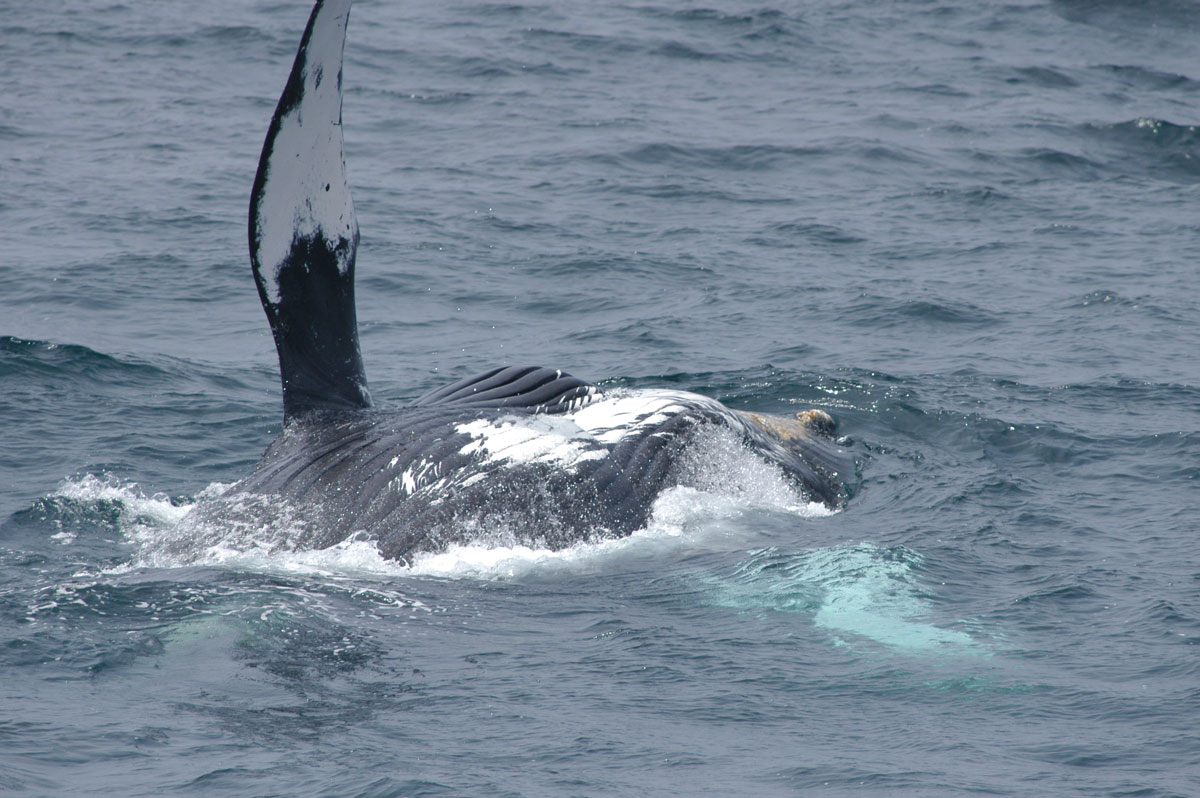Q: How do marine mammals sleep? And is sleep essential for their survival?
A: Sleep is incredibly important to higher vertebrates such as reptiles, birds, and mammals. Continued disruption of sleep—as the parents of newborns and the CIA know well—is a torture technique. And while the function of sleep is not totally understood, we do know that it’s absolutely vital to the health of animals.
During a whale-watching trip years ago out of Half Moon Bay, at around 3:30 in the afternoon—just about the time I like to take a nap—I saw a very light blow, or exhalation, from a whale. As we approached, we saw that the whale wasn’t swimming. We turned off our engine and drifted near the stationary whale for over an hour. We watched silently as the animal slowly sank beneath the surface, disappearing for 90 seconds, resurfaced in exactly the same location, took a very light breath, and then sank back down—over and over. My conclusion was that the animal was asleep. But breathing is not an involuntary autonomic response in whales as it is in terrestrial animals. How can you sleep if you’re a voluntary breather like this whale?
Studies of both captive and wild cetaceans have revealed a most fascinating adaptation: Half the brain appears to stay awake while the other hemisphere drops into what we call slow-wave sleep, or deep sleep. There are basically two different kinds of sleep as measured by electrical activity in the brain—REM (rapid eye movement) sleep and non-REM sleep. In non-REM sleep there are three stages, each characterized by decreasing frequency of electrical impulses. During stage III (slow-wave sleep), memories are consolidated into the neural network, and essential repair to bodily systems takes place.
Studies on captive bottlenose dolphins show that each side of the brain gets a total of about four hours of “sleep” in short stints as the opportunity arises over 24 hours. Half of the brain nods off and the opposite eye closes while the other wakes up and helps the animal survive. This is called unihemispheric slow-wave sleep or USWS. Survive how? This evolutionary transformation allows the animal to safely breathe, consolidate memories, do essential bodily repair, interact with other members of its social group, and stay cognizant of potential dangers like predators or large vessels approaching.
But what about pinnipeds—true seals (such as harbor seals) and eared seals (such as California sea lions) that can be found sleeping on land but spend many months at a time in the open ocean? Even though DNA analysis indicates that these two mammalian lineages share a common ancestor, only the eared seals exhibit USWS. But for some reason that remains unclear, true seals do not undergo USWS but are nonetheless very successful at getting the necessary “sleep” in their watery world through bilateral slow-wave sleep and holding their breath. An elephant seal, for example, can hold its breath for more than an hour. Other aquatic mammals, such as the Amazonian manatee, also have been shown to have USWS.
REM sleep occurs simultaneously in both hemispheres and is the final stage during the sleep cycle characterized by dream activity, and increased breathing and respiratory rate. The electrical activity of the animal’s brain during REM is quite similar to that when it is awake. While pinnipeds experience something like REM while on land, it turns out cetaceans do not go through REM sleep, so I reckon they don’t dream.
It’s 3:30 p.m.—time for that nap essential to my health. At least that’s my story and I’m sticking to it.


